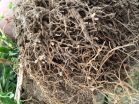How Salmonella survives the macrophage's acid attack
2015-04-14
(Press-News.org) Macrophages destroy bacteria by engulfing them in intracellular compartments, which they then acidify to kill or neutralize the bacteria. However, some pathogenic bacteria, such as Salmonella enterica, have evolved to exist and even grow while within these acidified compartments. Yet, how Salmonella responds to the acidic environment and how that environment affects the virulence of this pathogen are unclear. New research reveals that Salmonella fights acid with acid, by lowering the pH of its own interior in response to the acidification of the Salmonella-containing compartment by the macrophage, and by using that low pH as a signal to turn on genes needed to establish an infection.
"The question that we are addressing is: what is the signal that Salmonella senses when it is in the macrophage vacuole that turns on virulence gene expression and enables Salmonella to replicate and disseminate," says Linda J. Kenney, senior author and professor of the Mechanobiology Institute, National University of Singapore and at the University of Illinois at Chicago. Research from her group, publishing on April 14th in the Open Access journal PLOS Biology, demonstrates that the acidic cytoplasm then acts as a signal to stimulate the secretion of a particular class of Salmonella virulence proteins. These virulence proteins, or effectors, are released into the host cell, where they are able to perturb the immune response.
To investigate the effect of the acidic environment on Salmonella, the authors used a biosensor, called an I-switch, which allowed for measurements of pH within a single cell. Using the I-switch, the authors found that the Salmonella cytoplasm acidifies rapidly after being engulfed and exposed to the acidic environment of the macrophage interior. Interestingly, they found that the Salmonella actively, as opposed to passively, acidify their cytoplasm.
According to Professor Kenney, scientists who study more complex organisms are "astonished to find that bacteria can survive a cytoplasmic pH of 5.6 and that they even use this to signal expression of virulence genes." Their research shows that low pH activates an intracellular signaling cascade, which induces the formation of a nanomachine called the type III secretion system. This nanomachine is composed of a needle complex used to inject bacterial virulence proteins into the host cell.
"Understanding that signals previously thought to be external, but now shown by us to be internal, changes our thinking about mechanisms of signal transduction," reports Professor Kenney. This work also identifies new potential therapeutic targets, which could be exploited to prevent the expression of the virulence proteins, thus blocking the ability of Salmonella to survive and flourish within the macrophage.
INFORMATION:
Please mention PLOS Biology as the source for this article and include the links below in your coverage to take readers to the online, open access articles.
All works published in PLOS Biology are open access, which means that everything is immediately and freely available. Use this URL in your coverage to provide readers access to the paper upon publication:
http://www.plosbiology.org/article/info:doi/10.1371/journal.pbio.1002116
Contact:
Professor Linda J Kenney
Mechanobiology Institute of Singapore
kenneyl@uic.edu
Citation: Chakraborty S, Mizusaki H, Kenney LJ (2015) A FRET-Based DNA Biosensor Tracks OmpR-Dependent Acidification of Salmonella during Macrophage Infection. PLoS Biol 13(4): e1002116. doi:10.1371/journal.pbio.1002116
Funding: This study was supported by Veterans Affairs 5I0BX000372 grant to LJK and a Research
Centre of Excellence Grant from Ministry of Education to Mechanobiology to LJK. The funders had no role in study design, data collection and analysis, decision to publish, or preparation of the manuscript.
Competing Interests: The authors have declared that no competing interests exist.
ELSE PRESS RELEASES FROM THIS DATE:
2015-04-14
An unconventional clinical trial design might have advantages over classical trials for testing treatments for Ebola virus disease (EVD), suggests a study published this week in PLOS Medicine. The work of an international team led by John Whitehead of Lancaster University, UK and Ben Cooper of Oxford University, UK, provides much-needed data to inform a debate on the scientific and ethical justification for non-randomized EVD trials that has taken place in the editorial pages of a number of medical journals in past months.
The researchers compared three different scenarios ...
2015-04-14
In recent years, research into the benefits of gut bacteria has exploded. Scientists across the globe are examining how these microbes can help improve health and prevent disease.
One of the most well-known of these is Lactobacillus rhamnosus GG (LGG). This strain of bacteria, which is part of many popular probiotic products, has a reputation as a helpful microbe. Researchers have found evidence that it can help with intestinal problems, respiratory infections and some skin disorders. Some research suggests that it may even help with weight loss.
But a key question ...
2015-04-14
In research of significance to the world's expanding coastal populations, scientists have found that geology and infrastructure play key roles in determining whether aquifers that provide drinking water are inundated with seawater during a typhoon or hurricane and how long the contamination lasts.
In 2013, Typhoon Haiyan devastated the Philippines, killing more than 6,000 people and destroying nearly $3 billion worth of property. While the country is still recovering from the storm, researchers with The University of Texas at Austin have found that an aquifer on the island ...
2015-04-14
PULLMAN, Wash. - A team of international scientists has shown that assigning a dollar value to the benefits nature provides agriculture improves the bottom line for farmers while protecting the environment. The study confirms that organic farming systems do a better job of capitalizing on nature's services.
Scientists from Australia, Denmark, New Zealand, the United Kingdom and the United States describe the research they conducted on organic and conventional farms to arrive at dollar values for natural processes that aid farming and that can substitute for costly fossil ...
2015-04-14
As HIV investigators work to control and eradicate the virus worldwide, certain myths or misconceptions about the disease have been embraced, whereas other concepts with merit have been left relatively unexplored, argues American HIV/AIDS researcher Jay Levy, MD, in a commentary publishing April 14 in the journal Trends in Molecular Medicine. He calls on fellow researchers to continue questioning and not to lose sight of alternative strategies that could ultimately lead to a sustainable, long-term solution to HIV infection.
"This paper may be controversial, but people ...
2015-04-14
You might think that you can get away with eating fatty foods for a few days without it making any significant changes to your body.
Think again.
After just five days of eating a high-fat diet, the way in which the body's muscle processes nutrients changes, which could lead to long-term problems such as weight gain, obesity, and other health issues, a new study has found.
"Most people think they can indulge in high-fat foods for a few days and get away with it," said Matt Hulver, an associate professor of human nutrition, foods, and exercise in the Virginia Tech College ...
2015-04-14
This news release is available in German. Looking after yourself, and trying not to infect others, is a good strategy to prevent disease from spreading - not only if you are a considerate co-worker, but also if you are an ant, meerkat or other social animal, as revealed by an epidemiological model developed by the groups of Professor Fabian Theis from the Helmholtz Center Munich and Professor Sylvia Cremer from the Institute of Science and Technology (IST) Austria. In a Theme Issue of the Philosophical Transactions of the Royal Society B on "The Society-Health-Fitness ...
2015-04-14
This news release is available in Spanish and Spanish.
Combination of the anticancer drug PM1183 with PARP inhibitors and doxorubicin results in a synergistic effect against breast cancer cell lines and a SCLC mouse tumor model, respectively.
The anticancer candidate plitidepsin binds to eEF1A2, a novel therapeutic target in multiple myeloma, and shows activity in patient-derived tumor mouse models from a wide range of solid tumors and hematological cancers.
The new antibody-drug conjugate (ADC), MI130004, shows in vivo potent and long-lasting anticancer effects ...
2015-04-14
New research from the University of Warwick and University Hospitals Coventry and Warwickshire (UHCW) NHS Trust could transform treatments and diagnosis for a common digestive condition which affects thousands of patients.
The oesophagus or food pipe (gullet) is part of the digestive system. It is the tube that carries food from your mouth to your stomach. Barrett's Oesophagus (also known as BE) and low-grade dysplasia affects approximately 2% of the adult population, particularly those with heartburn, as acid reflux from the stomach can, over time, damage the lining ...
2015-04-14
When it comes to supramolecular chemistry, the carboxylic acid group (and its conjugate carboxylate base) is one of the chemist's most flexible friends. In pairs, they act as supramolecular synthons from which more complicated structures might be built but also offer up complex hydrogen bond connectivity. Luigi D'Ascenzo and Pascal Auffinger of the University of Strasbourg, France [D'Ascenzo, L. & Auffinger, P. (2015), Acta Cryst. B71, 164-175; doi: 10.1107/S205252061500270X], point out that until now there has been no exhaustive classification of these carboxyl(ate) motifs ...
LAST 30 PRESS RELEASES:
[Press-News.org] How Salmonella survives the macrophage's acid attack

